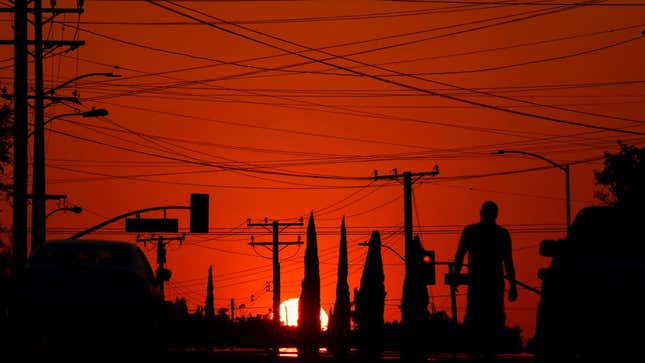
New research finds that not all Americans are equally bear the burden of extreme heat. Poorer communities are at disproportionate risk of searing temperatures, according to a study published in Earth’s Future, the American Geophysical Union’s interdisciplinary journal, on Tuesday.
The findings come right as the West lives through another blistering heat wave. And as policymakers grapple with how to protect people from heat, it shows that some neighborhoods need more help than others to adapt as the climate crisis worsens.
To conduct the analysis, the authors used satellite surface temperature data for 1,056 U.S. counties that have 10 or more census districts within them. They found that in 76% of cases, poorer neighborhoods were notably hotter during the summer than wealthier ones. The temperature differences were stark—there can be an up to 7-degree-Fahrenheit (3.9-degree-Celsius) difference between rich and poor communities in a single county.
The researchers also found a stark difference between summer temperatures in white communities compared with communities of color. Even when areas had similar income levels, non-white neighborhoods were hotter than white ones in 71% of counties examined. Immigrants also face greater risk from heat: In 64% of all counties, regions with higher concentrations of non-U.S. citizens saw higher temperatures.
If you want to see if and how this plays out in your city or town, you can. The researchers made their data publicly available and created an interactive map. I used it to confirm that the fancy area north of my Baltimore neighborhood is, indeed, cooler during hot days.
The main reason for these disparities, the authors write, is that poorer neighborhoods of color tend to have more asphalt, buildings, and highways, all of which absorb the incoming solar energy and then radiate heat. The phenomenon, known as the heat island effect, has come under increasing scrutiny by researchers in the past several years, particularly the uneven distribution of it. Richer neighborhoods tend to include more green elements, like parks and tree-lined streets, which help beat the heat. Trees can provide shade from the heat, and through transpiration, vegetation also releases water, which cools the air as it turns into a vapor.
“The findings are really quite staggering,” Jeremy Hoffman, a climate scientist at the Science Museum of Virginia who was not involved in the research, said in a statement. “These disparities exist across virtually every built environment in the country. Money doesn’t grow on trees, but it is certainly concentrated underneath them across the U.S.”
Separate recent studies have drawn similar conclusions. A Nature Communications report from May found that in nearly every major U.S. city, people of color are more likely to live in census tracts with a more intense heat island effect. And last month, one nonprofit research group published Tree Equity scores for 150,000 neighborhoods in 486 urban areas in the U.S., which showed that nationwide, wealthier areas have 65% more tree coverage than lower-income neighborhoods overall. Past research by Hoffman has also shown that formerly redlined neighborhoods—a racist practice that labeled Black neighborhoods as “risky” investments—experienced more intense heat as well.
One way to weather the extreme heat is to stay inside and crank the air conditioning, but that can be difficult for low-income communities who are more likely to already be struggling with electricity bills. A report out last year found poor households spent four times as much on utilities as well-off households.
The findings speak to the need to keep people of all classes and races cool. There are a number of strategies to do so, including boosting investments in green space for low-income neighborhoods. This could come with additional co-benefits, like improvements in mental health. As the authors note, we’ll need to ensure that the introduction of green space doesn’t become an engine of gentrification, which has happened in the past.
Not addressing this disparity could allow risks to multiply, particularly as the climate crisis worsens. The study notes that these extra hot zones could put more people at risk of heat-related illness and reduce productivity, widening the wealth gap. Heat also amplifies the effects of pollution—which poor people of color are already disproportionately exposed to—creating a whole other layer of health issues. In the U.S., heat is the single most deadly form of extreme weather. Keeping people safe from high temperatures must be a priority.